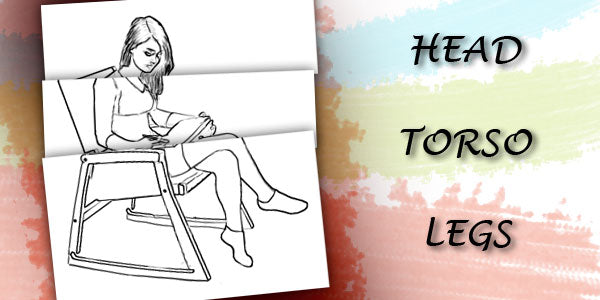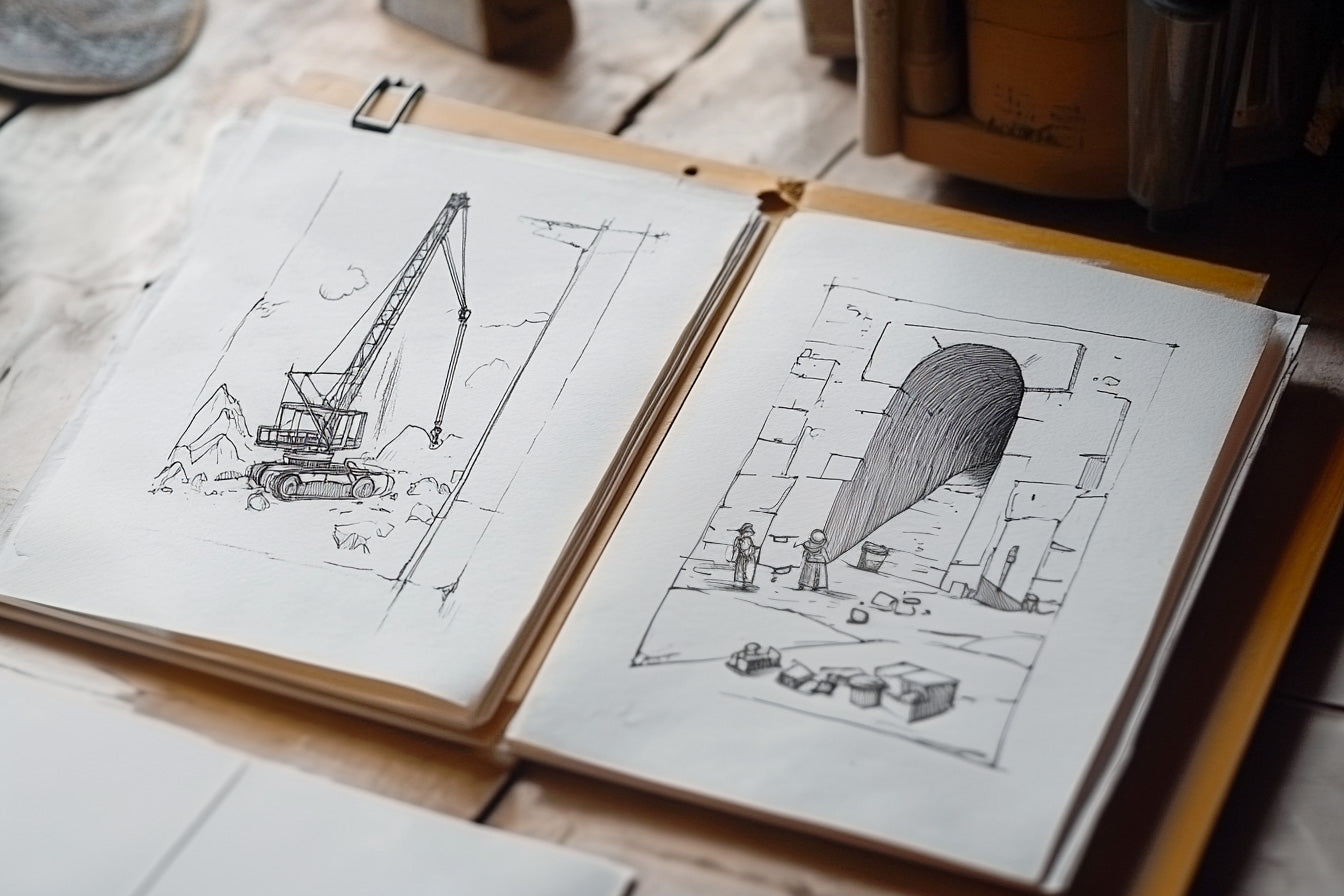Purpose
This drawing exercise is ideal for art classes on life drawing, or making illustration. The drawing results are often inspiring, helping delegates learn more about drawing techniques. This exercise also allows you to explore the topic further.
Objective
Draw various parts of other people while they draw you and form a composite drawing of the results.
What You Need
- An A5 sheet for each delegate
- Chairs
- Empty space to place the chairs in a circle
- Drawing pencils
Setup
- Divide the delegates to groups of 5. Get each group to sit on 5 chairs placed in a circle so everyone can easily see everyone else head to toe.
- Explain that this is a drawing task and they will be drawing each other. They need to know each other’s names for this exercise.
- Distribute the A5 sheets to delegates.
- Ask them to tear the A5 sheets to three equal horizontal parts.
- Ask them to write their names on each of the three pieces of paper.
- Next to their names on each sheet, delegates should write, Head, Torso and Legs.
- Get one person in each group to collect all the papers from the group members.
- Ask them to shuffle the pieces and then distribute them back at random to all the group members while making sure that:
- No one receives a paper with their own name on it
- Everyone gets a Head, Torso and Legs
- Now each person should draw a person’s specific body area as indicated on the pieces of paper. They need to consider the following:
- Draw on the back of corresponding pieces of paper so the names are not next to the drawings.
- The three drawings for Head, Torso and Legs must line up across the three pieces of paper. There should be no bleed.
- Allocate 15 minutes for the drawing exercise, 5 minutes for each area. Announce the time every 5 minutes so they don’t get carried away with drawing too much detail.
- After the allocated time, collect all the pieces from all groups. Do not mix each group’s papers with those of other groups. This makes it easier for you in the next stage.
- To keep the delegate’s busy while you carry on with the next step, ask each person to quickly draw the lips (or another non-moving part) of the person sitting in front of them in the circle as an extra activity while you are busy with the next task.
- While they carry on with the new drawing task, place all the pieces of papers on the table in a way that each person’ head, torso and legs match up as drawn by various people. Place them so that the drawings are visible and the names at the back of the papers are not visible.
- Gather everyone around the large table with the pieces of drawing and encourage them to explore the drawings. See if they can recognise who is who and how others have drawn each part. Use this opportunity to get them appreciate other people’s styles.
- Follow with a quick discussion.
Timing
Explaining the Exercise: 5 minutes (including initial setup)
Activity: 15 min main drawing + 3 min small drawing + 7 min reviewing all drawings = 25 minutes
Group Feedback: 2 minutes
Discussion
How easy was it to draw others while they were busy drawing and therefore moving? Which styles did you enjoy the most? If you had another chance to go through this exercise what would you do differently?
Soft Skills Training Materials
Get downloadable training materials
Online Train the Trainer Course:
Core Skills
Learn How to Become the Best Trainer in Your Field
All Tags
Training Resources for You

Course Design Strategy
Available as paperback and ebook

Free Training Resources
Download a free comprehensive training package including training guidelines, soft skills training activities, assessment forms and useful training resources that you can use to enhance your courses.

Our Comprehensive Guide to Body Language

Train the Trainer Resources
Get Insights - Read Guides and Books - Attend Courses
Training Materials
Get downloadable training materials on: Management Training, Personal Development, Interpersonal Development, Human Resources, and Sales & Marketing














Leave a comment
All comments are moderated before being published.
This site is protected by hCaptcha and the hCaptcha Privacy Policy and Terms of Service apply.